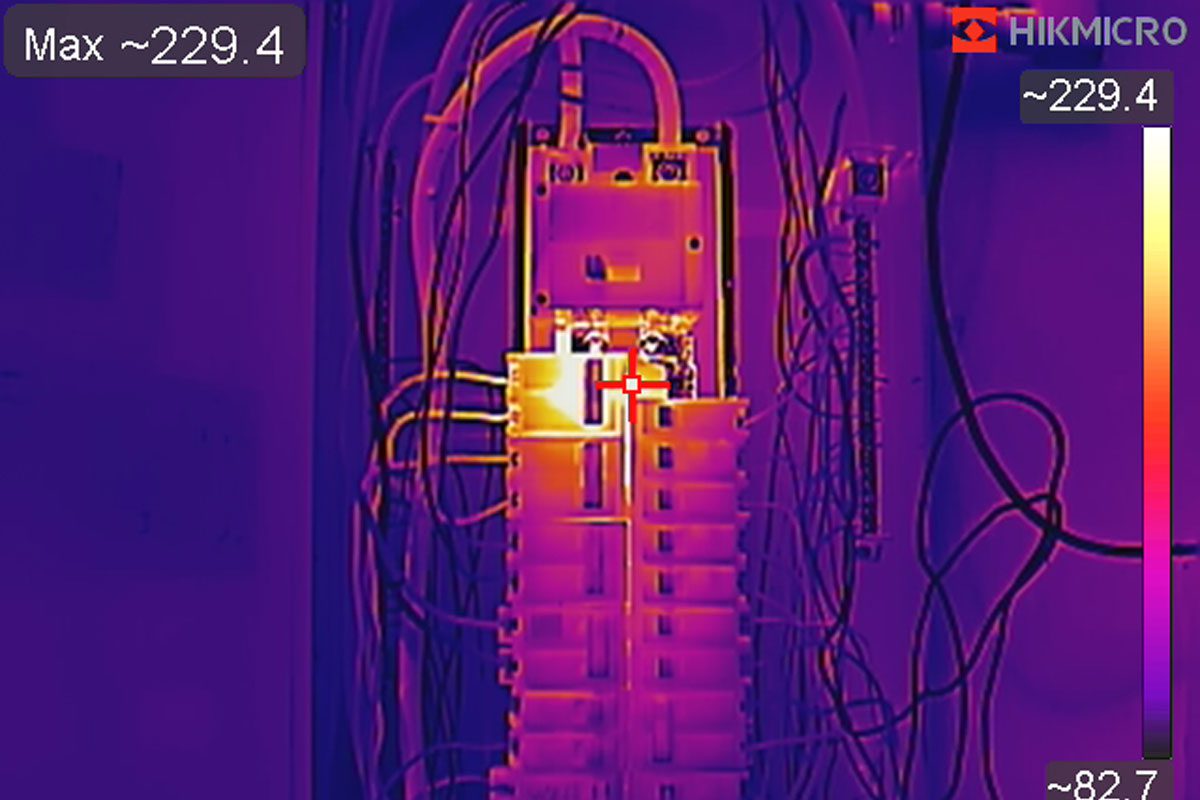Tampa is one of the most desirable home markets in the United States! Having a home inspection performed before purchasing a property will reduce unpleasant surprises down the road. Nobody wants to find out that there’s electrical problem or safety issues with the home once you’re under contract and ready to close on the property. In this blog post, we’ll explore some of the common problems home inspectors often encounter with electrical circuits and overcurrent protection during a inspections.
What is an Electrical Inspection and Why Does it Matter?
An electrical inspection is a thorough examination of a property’s electrical system to ensure it meets safety standards and regulatory requirements. Overall, electrical inspections play a vital role in maintaining the safety and functionality of properties, protecting occupants, and mitigating risks associated with electrical hazards.
These inspections are crucial for several reasons:
1) Safety: Faulty electrical systems can pose serious safety hazards, such as electric shocks, fires, and even fatalities. Regular inspections help identify potential issues before they become dangerous.
2) Compliance: Building codes and regulations mandate specific standards for electrical installations to ensure they are safe and up to code.
3) Insurance Requirements: Insurance companies often require electrical inspections to assess the risk associated with a property.
4) Peace of Mind: Knowing that your electrical system has been thoroughly inspected and deemed safe provides peace of mind for homeowners.
How to inspect and detect problems with electrical overcurrent protection.
Inspecting and detecting problems with electrical overcurrent protection involves several steps to ensure the safety and functionality of the system. Here’s a general guide.
1) Visual Inspection: By visually inspecting the electrical panel, looking for any signs of damage, corrosion, loose connections or overheating around breakers, fuses and wires.
2) Testing Equipment: Use appropriate testing equipment such as a thermal camera to measure temperature differences at each circuit breaker. Ensuring the circuit breakers are not overloaded causing an electrical arc or possible fire.
3) Check Overcurrent Devices: Test the functionality of circuit breakers by using a circuit analyer to tests the performance of AFCI/GFCI protection from different points on the branch circuit and measure the current flowing through the circuit to determine if it exceeds the rated capacity of the overcurrent protection device.
4) Inspect Wiring: Examine the wiring connected to the circuit breakers for any signs of overheating, insulation damage, or loose connections.
5) Verify Grounding: Ensure that the electrical system is properly grounded to prevent overcurrent events from causing harm.
Here’s a list of potential problems inspectors often encounter with electrical panels.
Inspectors often encounter a variety of problems with electrical panels during inspections. Here’s a list of potential issues they might come across.
1) Overloaded Circuits: Inspectors may find that circuits are carrying more current than they are designed for, leading to overheating and potential fire hazards.
2) Improper Wiring: Incorrectly wired panels can lead to electrical malfunctions, shocks or fires. This includes issues like reversed polarity or improperly sized conductors.
3) Damaged Components: Inspectors may find damaged breakers, fuses or other components within the panel which can compromise the safety and functionality of the electrical system.
4) Corrosion: Corrosion on panel components, especially in areas with high humidity or moisture can cause poor electrical connections and increase the risk of arcing or fires.
5) Inadequate Clearances: Electrical panels require specific clearances around them to ensure safe operation and accessibility. Inspectors may find panels obstructed by furniture, stored items or other fixtures.
6) Unsupported or Loose Wiring: Wiring that is not properly supported or secured within the panel can pose a safety hazard, as it may come into contact with other components or become damaged over time.
7) Missing or Improperly Installed Knockouts: Knockouts are used to create openings for wiring in electrical panels. Inspectors may find missing knockouts or ones that have not been properly installed, leaving openings for dust, debris or pests to enter the panel.
8) Obsolete or Unsafe Equipment: In older homes, inspectors may encounter electrical panels with outdated or unsafe equipment that no longer meets current safety standards. Upgrading these panels may be necessary to ensure safe operation.
Tips and Reminders for electrical safety within the home.
Ensuring proper electrical circuitry and overcurrent protection is crucial for safety. Here are some tips and reminders.
1) Circuit Capacity: Avoid overloading circuits by ensuring that the total electrical load does not exceed the circuit’s capacity. Distribute appliances and devices across multiple circuits as needed.
2) Proper Circuit Design: Ensure that circuits are designed and installed by a qualified electrician according to local building codes and regulations. Proper wiring gauge and circuit ratings should be matched to the expected load.
3) Ground Fault Circuit Interrupters (GFCIs): Install GFCIs in areas where water is present, such as kitchens, bathrooms, and outdoor outlets. GFCIs detect ground faults and quickly shut off power to prevent electrical shocks.
4) Arc Fault Circuit Interrupters (AFCIs): Consider installing AFCIs to detect and mitigate the risk of electrical fires caused by arcing faults in wiring or devices. AFCIs are particularly recommended for bedrooms and living areas.
5) Labeling: Properly label electrical panels to identify circuits and corresponding overcurrent protection devices.
6) Avoiding Circuit Overloading: Be mindful of the electrical load when adding new appliances or devices to a circuit. Consider installing additional circuits or upgrading existing ones to accommodate increased demand.
7) Avoiding Extension Cord Overuse: While extension cords can provide temporary power, avoid using them as a permanent solution. Overreliance on extension cords can overload circuits and increase the risk of electrical fires.
8) Professional Assistance: For any significant electrical work, such as installing new circuits or upgrading overcurrent protection devices, consult with a licensed electrician.
Closing.
One of the crucial areas home inspectors focus on during inspections is the electrical system. Electrical circuits and overcurrent protection play a vital role in ensuring the safety and functionality of a home’s electrical infrastructure. By addressing common problems such as overloaded circuits, improper wiring, faulty protection devices, and inadequate safety measures, homeowners can mitigate electrical hazards and create a safer living environment for themselves and their families.

